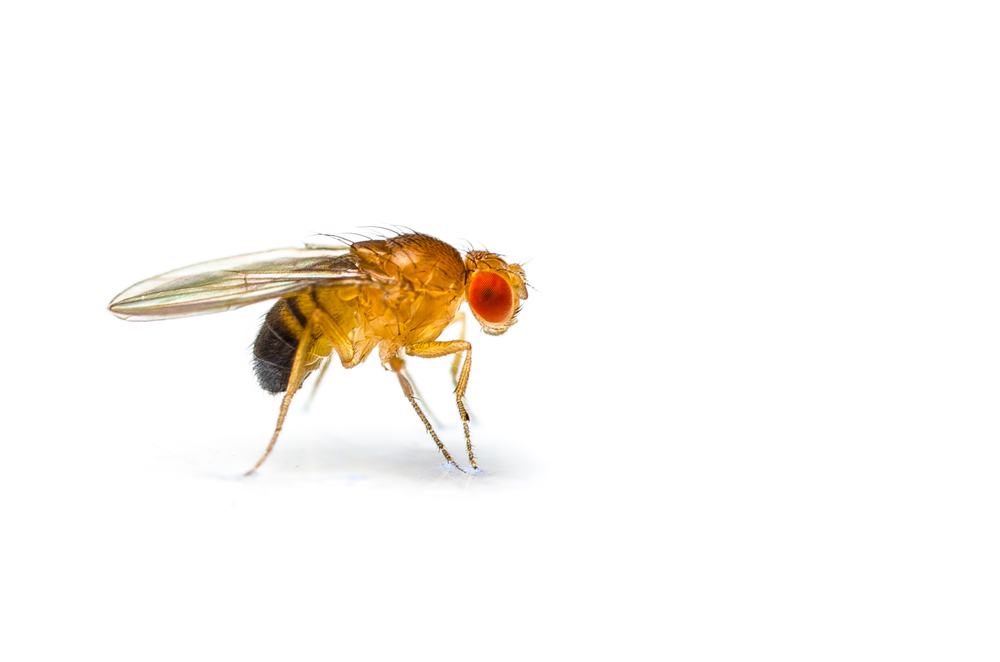ALS-linked Mutations Promote Accumulation of Brain Waste, Fruit Fly Study Shows

Loss of a protein known as ubiquilin causes defects in degradation centers called lysosomes, promoting the buildup of brain waste in amyotrophic lateral sclerosis (ALS) and frontotemporal dementia, a fruit fly study has found.
The study, “Ubiquilins regulate autophagic flux through mTOR signalling and lysosomal acidification,” was published in the journal Nature Cell Biology.
Although the underlying causes of ALS are poorly understood, like many other neurodegenerative diseases, the loss of protein homeostasis, or proteostasis — the biological quality control processes that ensure proteins are made at the right levels and perform their correct function — is commonly seen in different forms of ALS.
Mutations in two genes called UBQLN2 and UBQLN4, which carry the information to produce ubiquilin proteins, are known to cause ALS. However, what researchers didn’t know was how the loss of ubiquilins leads to ALS.
“Mutations in UBQLN2 and UBQLN4, genes that encode ubiquilins, have been linked to ALS and frontotemporal dementia, a condition similar to Alzheimer’s disease. Although ubiquilins are known to play crucial roles in various biological processes, there was no clear mechanistic understanding of how ubiquilin loss led to progressive neurodegeneration,” Hugo Bellen, PhD, a professor of molecular and human genetics and neuroscience at Baylor College of Medicine in Houston and the study’s lead author, said in a press release.
To understand the role of ubiquilin, the researchers looked at the single gene coding for the protein in the fruit fly. They first saw that ubiquilin was broadly detected and was necessary for the proper development of the nervous system.
They then deleted the gene ubiquilin and saw that its loss led to progressive signs of age-dependent neurodegeneration, as shown by impaired neuronal function, and the death of both nerve cells (neurons) and glial cells (key cells supporting neurons’ function and survival).
Cells, including neurons, degrade and prevent the buildup of abnormal proteins by tagging and sending them to a degradation factory called the proteasome. Ubiquilins have been reported to play a role in this process.
However, defects in the proteasome machinery alone could not explain the demise of neurons seen in the mutant flies, suggesting that the loss of ubiquilin affects another pathway.
The scientists found that deletion of the ubiquilin gene was linked to defects in another cleaning pathway, called autophagy.
“This suggested that a combined malfunction in the proteasomal and autophagic clearance mechanisms was responsible for the massive build up of dysfunctional proteins and eventual death of these neurons,” said Bellen, who also is a member of the Jan and Dan Duncan Neurological Research Institute at Texas Children’s Hospital.
Autophagy, which literally means “self-eating,” is a process by which cells degrade damaged material to build new ones. To do that, cells generate large “containers,” called autophagosomes where damaged proteins are sealed. The degradation of the damaged material is then initiated when autophagosomes fuse with acidic intracellular compartments — the lysosomes.
Researchers saw, however, that without ubiquilin, the lysosomes were not acidic, which meant they lost their degradative capacity.
“To our surprise, we found that in these mutant flies, the lysosomes were not acidified, which meant that enzymes that digest cellular garbage could not be activated, leading to waste accumulation,” said Mümine Şentürk, the study’s first author and a graduate student at Baylor.
When the scientists restored the acidity inside the lysosomes by feeding the flies acidic nanoparticles, they improved the clearance of damaged material.
They then introduced a mutation in the UBQLN2 gene that is linked to ALS and saw that it also impaired lysosome degradation.
Moreover, “we observed the same lysosomal degradation defects in human neuronal cells lacking ubiquilins, suggesting an evolutionarily conserved role for these proteins in regulating the clearance pathways,” Bellen said.
While “further studies are needed to test whether acidic nanoparticles also can promote the survival of neurons in the brains of intact mammals,” according to Bellen, these results suggest that enhancing the clearance of damaged material is a potential therapeutic strategy for ALS.
“We are very excited by the initial success of this strategy in reducing the build up of dysfunctional proteins in flies since it could potentially be developed as a novel therapeutic approach to treat ALS and frontotemporal dementia,” Bellen concluded.






